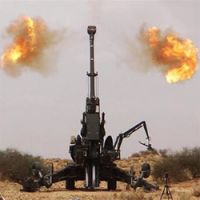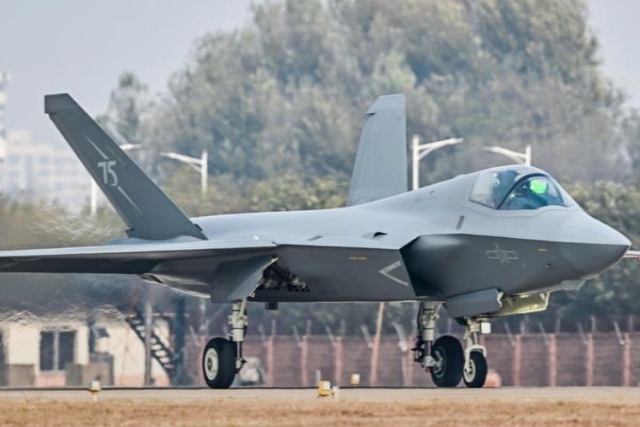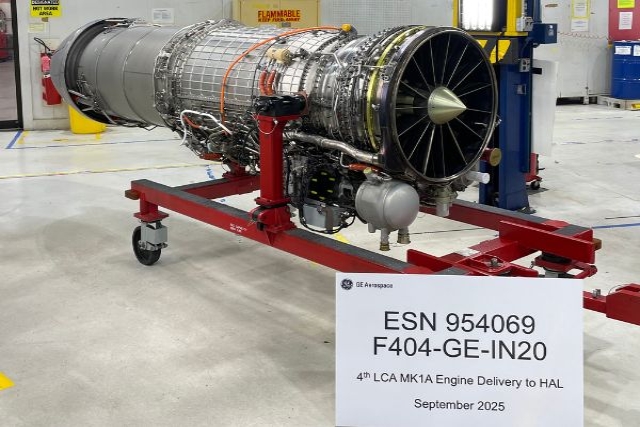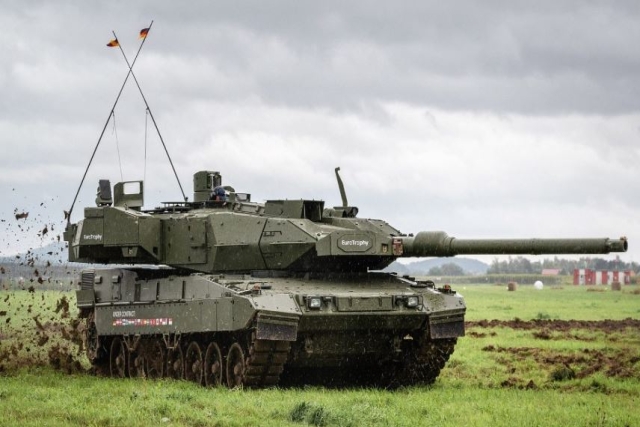Indian Army To Get First ‘Dhanush’ Howitzer In November

India’s indigenously-developed 155mm artillery gun ‘Dhanush’ is set to be handed over to the army in November.
This would be the first artillery gun to be inducted since the Bofors scandal of 1987.
“Dhanush is a 155mm gun with 45 calibre having advanced features, is likely to be handed over to the army in November this year,” Senior General Manager of Jabalpur’s Gun Carriage Factory (GCF), NK Sinha said Tuesday.
The gun, a towed howitzer with a strike range of 38-km, has been developed by Ordnance Factory Board (OFB), Kolkata, after going through the design and voluminous documents running into more than 12,000 pages which were delivered to India under the first phase of Transfer of Technology (ToT) as part of the Bofors gun deal in late 80s, an official said.
Costing about Rs 14 crore (US $2.1 million) apiece, Dhanush is comparable to most current generation weapons systems which are in use by different countries, the official added.
Along with electronic gun-laying and sighting systems and other features, the indigenously-developed gun has an enhanced 11-km range as against the gun range of 27-km of the imported Bofors.
Indian army had stationed a special team of officers at GCF to help monitor the progress, coordinate proof resources and provide guidance regarding the qualitative requirements vis-a-vis the gun system from the user’s perspective, the official said.
“A team from the 506 Army Base Workshop, close to CGF, was constantly providing technical inputs which it acquired for the project for over more than two decades,” he added.
The Swedish Bofors company (now owned by Britain’s BAE System) could not complete the ToT for the 155mm howitzer with 39 caliber to India as the deal got embroiled in a major political row over alleged kickbacks in 80s.
Subsequently, OFB struggled for a long time to produce the howitzer indigenously despite the fact that it has manufactured and supplied several components or spare parts to keep the Bofors howitzers operational in India, especially during Kargil war.
In the past, it had roped in an Israeli company, Soltam, to upgrade the imported, Russian-made 130mm gun to 155mm at GCF. But the project, after the upgraded gun’s trial, got caught up in some dispute, the official said.
Three years ago, the Defense Acquisition Council had decided to look for artillery guns within the country and asked OFB to start manufacturing howitzers.
The above move had come after four international howitzer firms—Soltam, Denel, Singapore Technologies Kinetics and Rheinmetall—were blacklisted by the Ministry of Defense (MoD) over allegations of graft.
“The project has received support and active cooperation from other ordnance factories, PSUs such as SAIL, BEL, and many private sector companies. Their support has made the project a huge success,” Sinha said.
Three Dhanush guns have already been readied and an equal number of the howitzers are being manufactured in the more-than-a-century-old GCF for delivery to the army.
Army has demanded the six howitzers following successful summer and winter trials of the artillery gun. The trials saw some 2,000 rounds being successfully fired from the howitzer in different climatic conditions in India in snowy, desert and hostile areas, the official added.
The gun will shortly go through maintainability and engineering evaluation and GCF was confident that their product would clear the same, the official said.
Army is looking to acquire a total of 114 of the Dhanush guns from GCF to augment its firepower, he said.
The army needs a huge number of howitzers of different types and Indian firms, some with the help of foreign manufacturers, are in the race to fulfill that demand with the gun’s variants.











